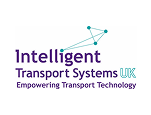Ellie Salicetti from field software provider FYLD discusses how artificial intelligence (AI) might influence the short to medium-term future of roads.
The UK government's AI Opportunities Action Plan promises to harness AI to revolutionise public services, boost economic productivity and improve living standards.
As a critical element of UK infrastructure, highways has to be central to this vision. With AI's potential to enhance road maintenance, minimise delays and improve safety, the sector has a part to play in a future where innovation drives better outcomes for the public and businesses alike.
However, turning ambition into impact requires more than aspirations. It demands robust, scalable solutions that can address the pressing challenges of today's road networks while laying the groundwork for a smarter future.
The highway challenge: A system under pressure
Roads are the backbone of our economy and daily life. However, they face increasing strain.
A recent estimate put the cost of traffic congestion at £7.5bn annually in the UK.
Poor road conditions contribute to road safety issues, vehicle damage and rising public dissatisfaction. Addressing the current backlog would take over a decade and cost £16.3bn according to the 2024 ALARM survey (updated figures coming soon).
Asset holders often face challenges in maintaining accurate and comprehensive data about the state of their networks. The scale of the challenge is huge. National Highways reports that it has £60bn worth of digital assets.
These issues are exacerbated by limited budgets, ageing infrastructure and the challenges of co-ordinating across local authorities, contractors and stakeholders. Without smarter approaches, these problems will continue to get worse as traffic volumes grow.
AI's promise for highways
The government's blueprint highlights several ways AI could transform road management:
- Pothole detection: Cameras powered by AI could identify road damage before it worsens
- Streamlined maintenance: AI-driven tools could accelerate planning, optimise resources, and reduce project timelines
- National Data Library: Revolutionising decision-making and operational efficiency in highways with data-driven approaches, reducing congestion, improving maintenance, and increasing user satisfaction.
These advancements can reshape the way highways are maintained, delivering tangible economic and social benefits. Yet, the path from concept to implementation requires addressing significant gaps in strategy, such as public engagement, stakeholder coordination and measurable metrics of success.
Where the response falls short
While a positive step forward for the investment in AI, the Government response lacks an emphasis on urgency and specificity. Some key areas of further clarity required for the highways industry in particular include:
- Actionable deployment of AI in road maintenance: While the Government highlights the potential of AI to detect potholes and improve road quality, rapid follow-up planning is fundamental to developing clear and actionable change.
- Proactive vs reactive maintenance: The response prioritises reactive measures, such as addressing potholes after they occur, rather than adopting a proactive approach to tackle key industry challenges more effectively.
- Co-ordination across stakeholders: The Government blueprint doesn't address the complexities of co-ordinating between local authorities, contractors and public stakeholders during AI implementation.
There is a pressing need for action and the sector could really benefit from a detailed roadmap for how it can deliver on the AI promise.
By ensuring robust collaboration, prioritising proven solutions; and maintaining an adaptive approach, the plan can position AI as a transformative force across sectors. With thoughtful implementation, AI can play a pivotal role in creating safer, smarter, and more sustainable road networks, benefiting both industry and society.
A smarter, safer future for highways
While pilot programs, as highlighted in the AI Opportunities Action Plan, are valuable for assessing the potential of emerging technologies, the highways industry already has access to proven AI solutions that deliver measurable benefits in safety, efficiency and cost reduction.
The focus should now shift toward rapid deployment of these tools to ensure innovation translates into tangible improvements without delay. By prioritising established technologies like FYLD's AI-powered platform, the industry can move beyond cautious experimentation and embrace a proactive approach to transforming road maintenance and infrastructure.
FYLD's AI-powered platform and smart workflows for instance address key challenges outlined in the government's plan, delivering real-time insights with actionable data, enabling proactive identification and triage of road damage and hazards.
It can also deliver AI-enabled workflows from initial detection to repair. FYLD can help deliver an 80% reduction in planning time, minimising job aborts and ensuring resources are used efficiently through real-time collaboration
Also, FYLD's AI-supported video risk assessments and remote manager visibility have seen 20% reductions in incidents and 85% cuts in service strikes, protecting workers and the public.
The Government's AI blueprint sets the stage for transformative change. By leveraging technology, highway authorities and contractors can move beyond traditional inefficiencies to build a smarter, safer, and more efficient network.
Highways magazine and FYLD are hosting a Symposium on Artificial Intelligence on 26th February. This Symposium will bring together key decision-makers and thought leaders in the highways and infrastructure sector to address what has become a critical industry challenge – making the most of revolutionary AI technology.

























